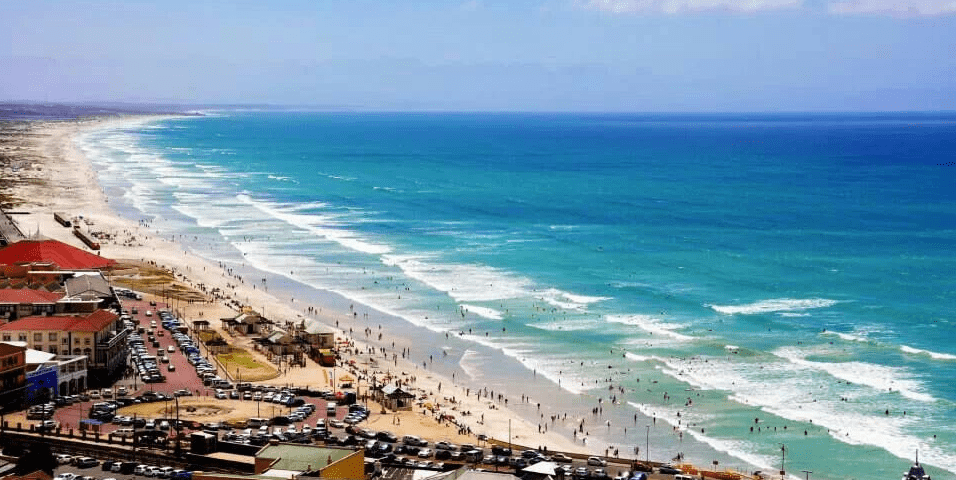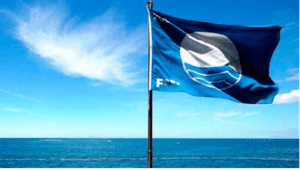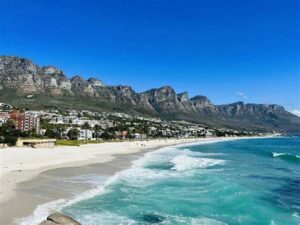
Find a list of Western Cape beaches here
South Africa has some of the world’s most beautiful unspoiled beaches. There are long stretches of white sand that go on for miles. Beaches in the Western Cape offer great surfing, fishing and other water sports opportunities. South Africa was the first country outside Europe to use the Blue Flag international beach grading system.
Blue flag beaches
To achieve blue flag status, a beach must fulfil several safety, cleanliness, and amenities requirements. Not all South African beaches are blue-flag beaches. This is merely a guide to assess services and safety of Beaches. Blue flag status depends on the following criteria:
- High standard of life-saving services
- Sufficient ablutions
- Disabled access
- Information boards about the ecosystem
- Environmental management
- Facilities such as parking, access points
- Cleanliness
- Water safety
Beaches in Cape Town

The water on the False Bay side of the Cape Peninsula tends to be about 4 degrees warmer than on the Atlantic seaboard. The water around the Western Cape coastline, however, is generally quite cold. False Bay stretches in a crescent shape from Cape Point on the west to the Helderberg beaches on the east. The beaches on the Atlantic side are somewhat protected from southeast winds and face spectacular sunsets.
Whether looking for a family-friendly beach, a surfing hotspot, or a peaceful retreat to enjoy breathtaking views, the Western Cape’s diverse coastline has something for everyone. The combination of natural beauty, diverse ecosystems, and well-maintained facilities makes these beaches a top destination for locals and tourists.
Beware of rip currents
It is advisable to swim in areas where lifeguards are on duty. Many beaches around the Western Cape coastline have dangerous rip currents. These are powerful channels of fast-moving water flowing away from the shore. The currents usually form where waves break over sandbars or reefs creating localised eddies. These can pull swimmers out to sea. The speed of the water movement can reach a speed of 3 metres per second.
Areas of darker water can indicate rip currents because of deep channels. Gaps between the waves and areas where waves are not breaking may be a sign of dangerous conditions. Choppy water on the surface can indicate a current where turbulent water is surrounded by smoother water.
If you are caught in a current, do not panic, it is best to conserve your energy by floating on your back. Do not fight against the current by attempting to swim towards the land, rather swim sideways to escape the force of water. Signal for help by raising your arm and shouting for help.
If you see someone who appears to need help, call a lifeguard, 112 is a free call from your cell phone for any emergencies. The number for the NSRI emergency operations centre is 087 094 9774

Many f the beach listings in Colourdots have links to sea temperature, tides and the surf report where relevant.
See a list of some of the Best beaches in the Western Cape
Check the tides of Western Cape beaches here
Beaches in the Western Cape with Blue Flag Status include Bikini Beach in Gordon’s Bay; Brenton on Sea; Buffels Baai; Camps Bay; Castle Beach in St Helena Bay; Clifton; De Bakke in Mossel Bay; Glentana Beach; Gouritsmond; Hartenbos; Hawston; Klein River estuary near Hermanus; Kleinmond beach; Lappiesbaai near Stilbaai; Llandudno; Lookout Beach in Plettenberg Bay; Melkbosstrand; Mnandi Beach in Mitchells Plain; Mossel Bay; Muizenberg; Natures Valley; Preekstoel beach near Stilbaai; Robberg Beach in Plettenberg Bay; Santos Beach in Mossel Bay Silverstroomstrand in Melkbosstrand; Struis Baai main beach; Wilderness; Witsand
See also Water, water everywhere

